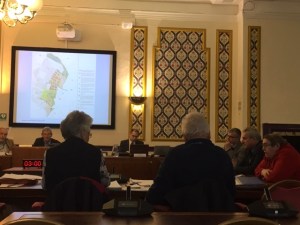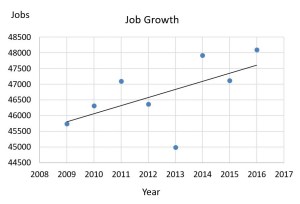The first test of The Independent Group on large-scale development. It got to make up the EDDC Cabinet and its Leader, Ben Ingham, has appointed several current and former Tories to positions of influence.
What will each group’s stand be on large-scale development? And what happens if the smaller parties have different views to that of the Independent Group and Tories if they agree? Interesting.
There are a few worrying words in this press release – potential, proposed, outlines, capable of, vision, could, opportunities. Lots of leeway for developet mund-changing at a later date.
And missing words: affordable and social housing.
Plus our local NHS Trust wants more than £1.3 million before it considers the proposal sustainable for health needs.
“Plans for 930 new homes as part of the western expansion of Cranbrook have been revealed.
The proposals for the Bluehayes site would also see a primary school, sport and recreational facilities, community uses, green infrastructure, as well as a mixed use area of shops, food and drink and professional services built.
The Bluehayes site, which lies between the existing Cranbrook development and Broadclyst Station, is one of four proposed expansion areas of Cranbrook.
A new link road that would run from the Cranbrook railway station to London Road and to Broadclyst Station, through the middle of the Bluehayes site, is also proposed in the scheme handed in recently to East Devon District Council planners.
And the plans also reveal that a footbridge over the London Road that would connect the Bluehayes site with the proposed Treasbeare site, south of the road, could be built.
The Cranbrook Plan was backed by East Devon District Council’s Strategic Planning Committee in February which outlines the land where a further 4,170 new homes will be built.
It allocates 40 hectares of land at the Bluehayes Expansion Area for around 960 new dwellings, land capable of accommodating a community building, formal open space recreational land, a 420 pupil place primary school, formal play space with facilities for children and youth and allotments totalling an area of 0.55 hectare of land
Details with a planning statement submitted with the planning application says: “The submission of the new outline application for the Western Expansion of Cranbrook and the change of use of agricultural land to the north of Cranny Brook to SANG land, is consistent with the planning policy and the longstanding policy to deliver new homes to meet the needs of the area.
“The submission of the application for the Western Expansion area and their progression delivers certainty required in the long term delivery of growth and of the delivery of the vision for Cranbrook.
“The proposals have been designed to be residential led with the potential for the delivery of a new primary school and formal outdoor sports pitches to provide complementary community and social infrastructure to meet the needs of new residents.
“The application demonstrates provision of the necessary infrastructure to include internal roads, public transport provision, formal and informal open space uses to support itself and to mitigate any impacts of development on existing communities and wider infrastructure.
“Cranbrook and its Western Expansion have been fully justified in the context of local planning policy and in the context of the growth agenda and the national and local need for housing.
“The proposals will result in substantial and demonstrable benefits in terms of meeting the need for new homes in a sustainable manner, fostering economic development and further underpinning the sustainability of Cranbrook.
“The proposals will also help deliver the vision for Cranbrook and underpin the planning and delivery of infrastructure and the town centre.”
A 1.14 hectare site for a one-form entry primary school could come forward as part of the plans. The primary school will be built in either the Bluehayes or the Treasbeare allocation, depending on which is constructed first.
Details with the scheme also outline that a new link road from the Cranbrook station to London Road and to Broadclyst Station will be built.
There will be a new frontage to London Road which will comprise a mixed use area, providing opportunities for a range of residential, retail and small scale employment uses, and in future, a crossing over London Road to the southern expansion area may be accommodated.
But the Royal and Devon Exeter NHS Foundation Trust have requested a contribution of £1,332,313 from the developers, cash which will be used directly to provide additional health care services to meet patient demand.
Commenting on the application, they say: “Without the contribution being paid, the development would not be acceptable in planning terms as the consequence would be inadequate health services available to support it.”
Having considered the cost projections, the Trust say that they will require the full figure to ensure the required level of service provision is delivered in a timely manner.
They add: “Failure to access this additional funding will put significant additional pressure on the current service capacity, leading to increase delays for patients and dissatisfaction with NHS services.
“The contribution will ensure that Health services are maintained for current and future generations and that way make the development sustainable.”
The Bluehayes expansion is one of four proposed expansion areas for Cranbrook, which development also proposed for Treasbeare and Grange, south of the existing town, and Cobdens, to the east of the town.
A reserved matters application has also been submitted for 80 homes, for which outline planning permission has already been granted, for land north-east of the Cranbrook Education Campus.
East Devon District Council planners will determine the fate of the applications at a later date.”
https://www.devonlive.com/news/devon-news/cranbrook-getting-bigger-930-new-2923726




